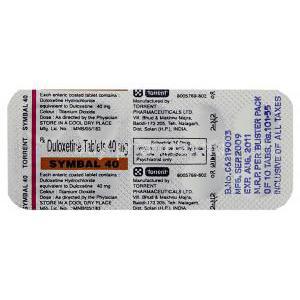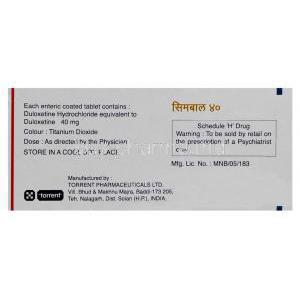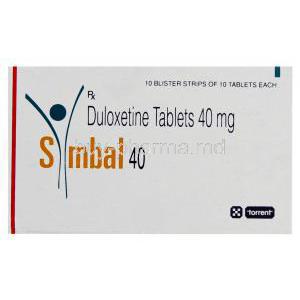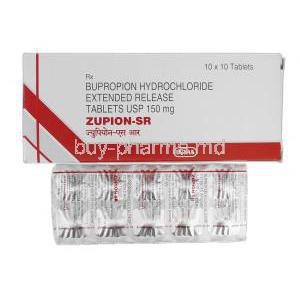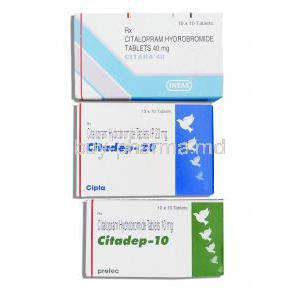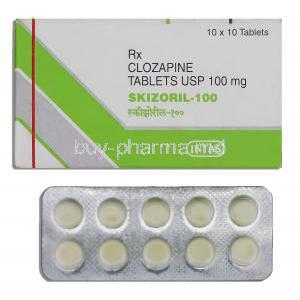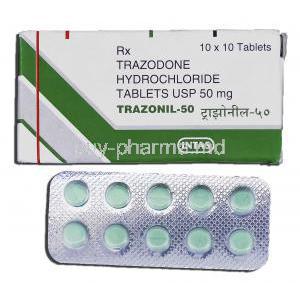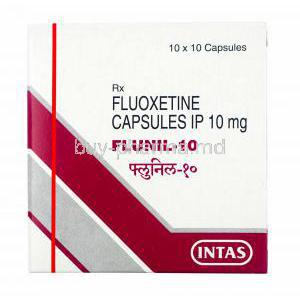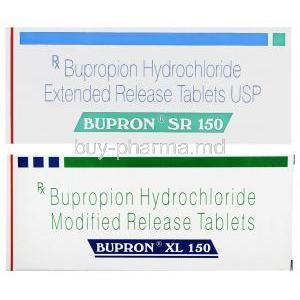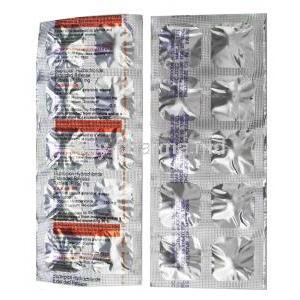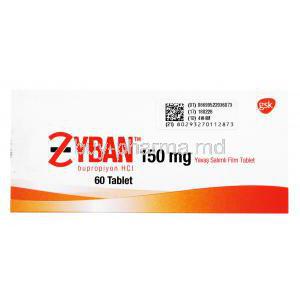Introduction
Overview of Symbal (Duloxetine)
Symbal, known generically as duloxetine, is a potent pharmacological agent widely utilized in psychiatry and neurology. It has established itself as an effective remedy for mood disorders and certain chronic pain conditions. Its therapeutic profile is diverse, addressing both psychological and somatic symptoms.
Therapeutic classification: serotonin-norepinephrine reuptake inhibitor (SNRI)
Duloxetine belongs to the class of serotonin-norepinephrine reuptake inhibitors (SNRIs). By targeting two key neurotransmitters, serotonin and norepinephrine, it creates a more comprehensive modulation of neuronal communication compared with selective serotonin reuptake inhibitors (SSRIs).
Brief history and approval status
The compound was developed in the late 20th century, and regulatory approval soon followed in major markets such as the United States, Europe, and Asia. It was first approved by the FDA in 2004 for depression and later expanded to cover multiple therapeutic domains including neuropathic pain and fibromyalgia.
Composition and Formulation
Active ingredient: Duloxetine hydrochloride
The central pharmacological constituent is duloxetine hydrochloride, which is responsible for its therapeutic activity.
Available strengths and dosage forms (capsules, delayed-release formulations)
Symbal is generally manufactured in delayed-release capsule forms, with common strengths including 20 mg, 30 mg, and 60 mg. The enteric coating safeguards the active substance from premature degradation in gastric acid, ensuring optimal absorption in the intestine.
Inactive ingredients and excipients
Excipients may include substances such as hypromellose, titanium dioxide, talc, and gelatin. These compounds provide capsule stability, enhance dissolution, and contribute to controlled drug delivery.
Mechanism of Action: How Duloxetine Works
Dual inhibition of serotonin and norepinephrine reuptake
Duloxetine acts by inhibiting the presynaptic reuptake of both serotonin and norepinephrine. This action amplifies the synaptic concentration of these neurotransmitters, leading to improved communication between neurons.
Effects on neurotransmitter balance in the central nervous system
The increased neurotransmitter availability contributes to mood stabilization, anxiolysis, and heightened cognitive function. By restoring equilibrium, duloxetine helps counter the neurochemical imbalances linked with depression and anxiety disorders.
Influence on pain perception pathways
Duloxetine modulates descending inhibitory pain pathways in the central nervous system. This explains its efficacy in neuropathic and musculoskeletal pain conditions, where dysregulation of nociceptive processing plays a pivotal role.
Pharmacodynamics and pharmacokinetics
The drug is well absorbed orally, undergoes extensive hepatic metabolism via CYP1A2 and CYP2D6, and has a half-life of approximately 12 hours. Steady-state plasma concentrations are usually achieved within 3 days of consistent dosing.
Approved Medical Uses of Symbal (Duloxetine)
Major depressive disorder (MDD)
Duloxetine is frequently prescribed as a first-line agent for major depressive disorder, alleviating symptoms such as anhedonia, low mood, and impaired sleep.
Generalized anxiety disorder (GAD)
Its anxiolytic benefits make it highly effective in patients with chronic, excessive worry and associated somatic symptoms.
Diabetic peripheral neuropathic pain
Duloxetine mitigates the debilitating pain associated with diabetic neuropathy, improving both sleep and quality of life.
Fibromyalgia
Patients with fibromyalgia often benefit from duloxetine’s dual action, reducing widespread pain and fatigue while enhancing overall functionality.
Chronic musculoskeletal pain (e.g., osteoarthritis, lower back pain)
It is also prescribed to relieve persistent pain syndromes such as osteoarthritis and chronic low back pain, where conventional analgesics often fail to provide sufficient relief.
Off-Label Uses of Duloxetine
Stress urinary incontinence
Duloxetine has shown efficacy in reducing episodes of stress urinary incontinence through modulation of urethral sphincter activity.
Chemotherapy-induced peripheral neuropathy
It provides symptomatic relief for neuropathy caused by cytotoxic agents, especially platinum-based chemotherapeutics.
Chronic fatigue syndrome
Some clinicians employ duloxetine to alleviate fatigue and musculoskeletal pain in chronic fatigue syndrome.
Low back pain beyond standard indications
Even outside its official approval, duloxetine is occasionally used for broader categories of nonspecific chronic back pain.
Migraine prophylaxis
Although not universally recognized, there is ongoing investigation into duloxetine’s role in migraine prevention due to its neuromodulatory effects.
Other emerging investigational uses
Research continues into potential roles in tinnitus, post-traumatic stress disorder, and functional gastrointestinal disorders.
Dosage and Administration
General dosing guidelines for approved indications
Initial doses typically begin at 30 mg once daily, progressing to 60 mg based on clinical response. Some patients may require titration up to 120 mg per day.
Titration schedules and individualized treatment adjustments
Dose increments should be gradual to minimize adverse events. Clinicians adjust according to therapeutic effect, comorbidities, and tolerance levels.
Duration of therapy and tapering considerations
Therapy is often long-term. Sudden discontinuation is discouraged due to withdrawal phenomena; instead, doses should be tapered over several weeks.
Instructions for missed doses
If a dose is missed, it should be taken as soon as remembered, unless the next scheduled dose is near. Doubling doses is not advised.
Special instructions for switching from or to other antidepressants
Switching requires medical oversight to avoid serotonin syndrome or destabilization. Washout periods may be necessary with certain medications such as MAO inhibitors.
Side Effects of Symbal
Common Side Effects
- Nausea, dry mouth, constipation, or diarrhea
- Fatigue, somnolence, or dizziness
- Increased sweating and appetite suppression
- Weight fluctuation and sexual dysfunction
Serious Adverse Reactions
- Hepatotoxicity, including elevated liver enzymes and rare hepatic failure
- Hyponatremia and syndrome of inappropriate antidiuretic hormone secretion (SIADH)
- Serotonin syndrome when combined with serotonergic drugs
- Enhanced bleeding risk when used with anticoagulants or antiplatelets
- Severe cutaneous adverse reactions such as Stevens-Johnson syndrome
Warnings and Important Precautions
Suicide risk, particularly in young adults
Like other antidepressants, duloxetine carries a black box warning regarding increased suicidality in individuals under 25. Vigilant monitoring during initiation is essential.
Blood pressure monitoring and cardiovascular risks
Hypertension and tachycardia may occur; therefore, periodic monitoring is advisable in patients with cardiac risk factors.
Risk of glaucoma and urinary retention
Duloxetine can increase intraocular pressure and exacerbate urinary retention, necessitating caution in predisposed patients.
Monitoring for mood changes and behavioral disturbances
Patients should be observed for agitation, irritability, or behavioral shifts suggestive of psychiatric destabilization.
Impairment of cognitive and motor functions
Duloxetine may cause dizziness and somnolence, impairing the ability to drive or operate machinery. Patient education on these potential effects is critical.
Contraindications
Hypersensitivity to duloxetine or formulation components
Patients with a known hypersensitivity to duloxetine or any of its excipients must avoid use. Hypersensitivity reactions may range from mild dermatological manifestations to severe anaphylaxis, making it an absolute contraindication.
Concurrent use with monoamine oxidase inhibitors (MAOIs)
Administration with MAOIs is strictly contraindicated due to the risk of life-threatening serotonin syndrome and hypertensive crises. A sufficient washout period, generally two weeks, must be observed when transitioning between these therapies.
Severe hepatic impairment or chronic alcohol use
Because duloxetine undergoes extensive hepatic metabolism, individuals with advanced liver disease or chronic alcohol abuse are at a heightened risk for hepatotoxicity. Such patients must not be prescribed this medication.
Severe renal impairment
In cases of end-stage renal disease or significantly reduced creatinine clearance, duloxetine clearance is compromised, leading to accumulation and toxicity. Its use is contraindicated in patients with severe renal dysfunction.
Drug Interactions
Interactions with serotonergic agents (SSRIs, SNRIs, triptans)
Combining duloxetine with other serotonergic drugs increases the probability of serotonin syndrome. Symptoms may include agitation, diaphoresis, tremors, hyperreflexia, and in severe cases, seizures and hyperthermia.
MAO inhibitors and risk of hypertensive crisis
Simultaneous use of duloxetine with MAOIs can precipitate dangerously high blood pressure and severe systemic instability. This combination is strictly avoided.
CYP1A2 and CYP2D6 inhibitors or inducers
Duloxetine is metabolized primarily by CYP1A2 and CYP2D6 isoenzymes. Inhibitors of these enzymes, such as fluvoxamine or paroxetine, can increase duloxetine plasma concentrations, while inducers like smoking can lower therapeutic efficacy.
Interaction with anticoagulants and antiplatelet drugs
Concurrent therapy with agents such as warfarin, aspirin, or clopidogrel may heighten bleeding risk. Regular monitoring of coagulation parameters is advised for patients on combination therapy.
Effects with alcohol and central nervous system depressants
Co-ingestion with alcohol exacerbates hepatotoxic potential and may impair cognitive and psychomotor performance. Concomitant use with sedatives or hypnotics increases the likelihood of excessive sedation and central nervous system depression.
Careful Administration and Special Considerations
Administration in Elderly Patients
Elderly individuals are more sensitive to duloxetine. Dose adjustments may be necessary, and careful monitoring should focus on:
- Hyponatremia and electrolyte disturbances
- Orthostatic hypotension
- Increased fall risk due to sedation or dizziness
Administration in Pregnant Women and Nursing Mothers
The safety of duloxetine during pregnancy remains insufficiently established. Although animal studies suggest potential fetal risk, human data is limited. It should only be prescribed if the anticipated maternal benefit outweighs the risk to the fetus.
Excretion of duloxetine in breast milk has been documented, and nursing infants may be exposed to pharmacologically active levels. Alternative feeding or alternative therapies should be considered during lactation.
Administration in Children and Adolescents
Pediatric use is not universally recommended due to limited efficacy data and concerns regarding increased suicidality. When prescribed, stringent monitoring of mood and behavior is indispensable.
Overdosage and Emergency Management
Symptoms of duloxetine overdose
Clinical signs may include somnolence, seizures, tachycardia or hypertension, vomiting, and manifestations of serotonin syndrome such as rigidity, hyperthermia, and autonomic instability.
Immediate medical interventions and supportive care
Emergency management should prioritize airway protection, cardiovascular stabilization, and seizure control. Intravenous fluids, benzodiazepines, and close monitoring are standard approaches.
Gastric decontamination and symptomatic treatment
Activated charcoal may be administered if ingestion is recent. Hemodialysis is not effective due to high protein binding of duloxetine. Symptomatic treatment remains the cornerstone of management.
Handling and Storage Precautions
Recommended storage conditions (temperature, humidity, light exposure)
Duloxetine capsules should be stored at controlled room temperature, typically between 20–25°C. They must be protected from excessive humidity and direct sunlight to maintain stability.
Shelf life and stability considerations
Packaging should remain intact until use, as exposure to air and moisture can degrade the integrity of the enteric coating. Adhering to the manufacturer’s expiration date ensures safety and potency.
Safe handling and disposal instructions
Unused or expired medication should be disposed of in accordance with pharmaceutical waste guidelines. Flushing into water systems or casual disposal in household trash is discouraged due to environmental risks.
Conclusion
Summary of therapeutic importance
Duloxetine, marketed as Symbal, remains a cornerstone therapy for depression, anxiety, and chronic pain syndromes. Its multifaceted mechanism confers broad clinical utility.
Balance of benefits versus risks
While highly effective, its administration requires careful consideration of contraindications, interactions, and patient-specific risk factors. The potential for serious adverse effects necessitates judicious prescribing.
Role of medical supervision in safe use of Symbal (Duloxetine)
Close medical oversight ensures optimal outcomes. Regular monitoring, patient education, and individualized therapy adjustment are integral to maintaining safety and maximizing therapeutic gain.
Symbal, Duloxetine FAQ
- What is the use of Symbal Tablet?
- Is Symbal 20 a sleeping pill?
- What are the side effects of Symbal 30 mg?
- What is duloxetine mainly used for?
- What are the most common side effects of duloxetine?
- Is duloxetine a sleeping pill?
- Is duloxetine 30 mg a narcotic?
- What is the main reason for taking duloxetine?
- Who cannot take duloxetine?
- What to avoid while taking duloxetine?
- Is duloxetine a strong pain killer?
- How long is it safe to take duloxetine?
- Can duloxetine cause weight gain?
- What happens if you stop taking duloxetine suddenly?
- What are the pros and cons of taking duloxetine?
- Which is better, duloxetine or tramadol?
- What organ does duloxetine affect?
- Does duloxetine give you energy?
- What is the most common side effect of duloxetine?
- How fast does duloxetine work?
- What diseases does duloxetine treat?
- Why would a doctor prescribe duloxetine?
- Can I take vitamin D with duloxetine?
- What is a good alternative to duloxetine?
- Can duloxetine affect sleep?
- Can I drink coffee on duloxetine?
- Does duloxetine cause hair loss?
- Does duloxetine relax you?
- What painkillers can I take with duloxetine?
What is the use of Symbal Tablet?
The Symbal 20 Tablet is prescribed for treating depression and anxiety disorders, diabetic nerve pain, and fibromyalgia—a condition characterized by widespread body pain and tenderness, neuropathic pain, and stress urinary incontinence.
Is Symbal 20 a sleeping pill?
No
What are the side effects of Symbal 30 mg?
- Insomnia
- Tiredness
- Headaches
- Constipation
- Nausea
What is duloxetine mainly used for?
Duloxetine falls into the category of antidepressants known as serotonin noradrenaline reuptake inhibitors (SNRI). These drugs are believed to boost the levels of serotonin and noradrenaline, chemicals associated with mood improvement, in the brain to alleviate depression and anxiety symptoms.
What are the most common side effects of duloxetine?
- Insomnia
- Tiredness
- Headaches
- Constipation
- Nausea
Is duloxetine a sleeping pill?
No
Is duloxetine 30 mg a narcotic?
No
What is the main reason for taking duloxetine?
The medication duloxetine is prescribed for managing depression and anxiety, as well as for alleviating pain resulting from nerve damage linked to diabetes (known as diabetic peripheral neuropathy). Additionally, duloxetine is utilized in the treatment of fibromyalgia, which involves muscle pain and stiffness, along with pain associated with muscles and bones that persists over time.
Who cannot take duloxetine?
- Have kidney or liver problems
- Have heart problems
- Taking medicines for depressions
- Have glaucoma
What to avoid while taking duloxetine?
- Other medicien for depression
- Medicine to prevent blood clots
- Medicine for sleep
Is duloxetine a strong pain killer?
Duloxetine is commonly prescribed for managing forms of pain conditions, like nerve pain characterized by sensations of burning or stabbing pain that can disrupt sleep patterns.
How long is it safe to take duloxetine?
6 months to a year
Can duloxetine cause weight gain?
Yes
What happens if you stop taking duloxetine suddenly?
You may experience irritability and nausea along with feelings of dizziness.
What are the pros and cons of taking duloxetine?
It is usually well tolerated. Some common side effects may include mouth and stomach problems well as headaches.
Which is better, duloxetine or tramadol?
Duloxetine
What organ does duloxetine affect?
Liver damage caused by duloxetine is recognized in individuals with existing liver conditions or those who regularly consume alcohol.
Does duloxetine give you energy?
Yes
What is the most common side effect of duloxetine?
Nausea
How fast does duloxetine work?
2 to 4 weeks
What diseases does duloxetine treat?
- MDD
- GAD
- Fibromyalgia
- Diabetic peripheral neuropathy
- Chronic musculoskeletal pain
Why would a doctor prescribe duloxetine?
The medication duloxetine is prescribed for managing depression in adults and generalized anxiety disorder.
Can I take vitamin D with duloxetine?
Yes
What is a good alternative to duloxetine?
Lexapro, Effexor, Prozac, Wellbutrin
Can duloxetine affect sleep?
Yes
Can I drink coffee on duloxetine?
No
Does duloxetine cause hair loss?
No
Does duloxetine relax you?
Yes
What painkillers can I take with duloxetine?
Acetaminophen (Tylenol)



